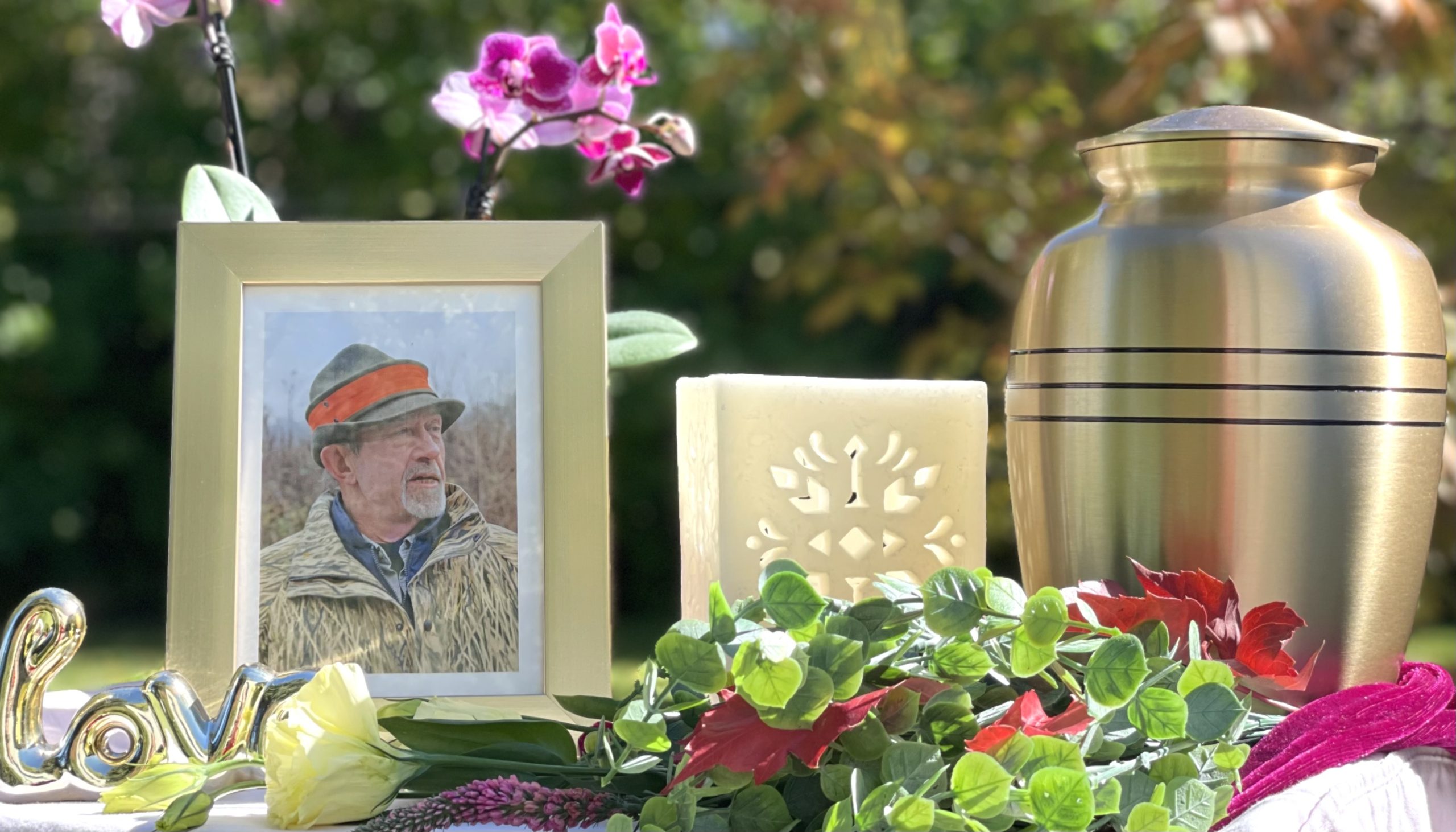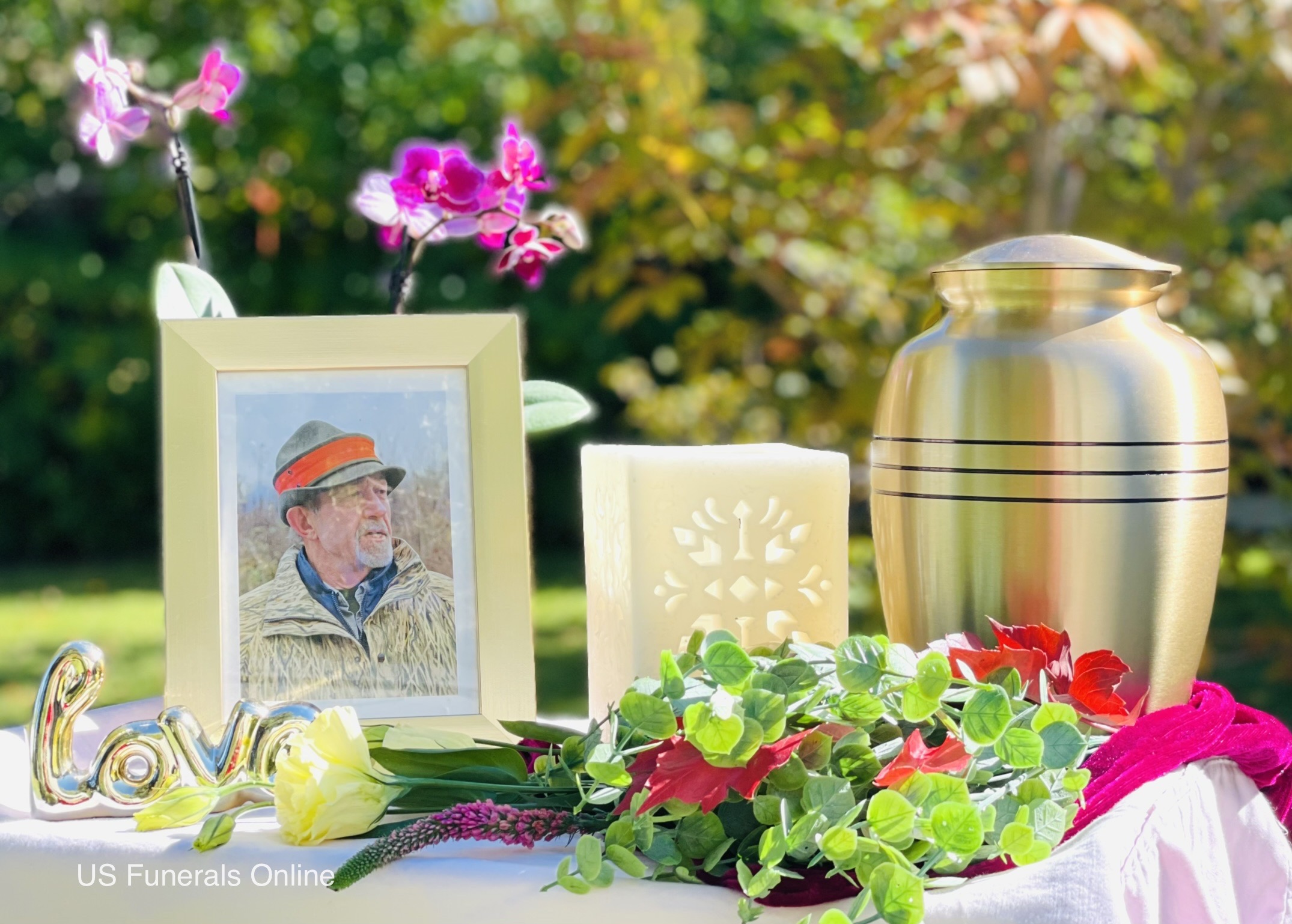This guide contains information and tips on memorializing a loved one following cremation and some Memorial Service Ideas. Arranging a cremation memorial service can sometimes seem daunting and a great responsibility.
Here, we cover everything you need to know about memorializing a loved one. We cover:
- Understanding what a memorial service entails and represents
- How a memorial service differs from a funeral service
- Planning of a personalized cremation memorial service
- Creating memorial tributes with words, memorabilia, and artifacts
- Setting up an online memorial page or website
- The role of technology and memorial services
- Deciding on the final disposition of the cremated remains
- How direct cremation and a family memorial service can save thousands on funeral costs
Find Local Providers to check cremation prices near you – >>

Memorialization Explained
A change in how we memorialize with cremation
Cremation offers much greater flexibility in how we can memorialize a loved one who has passed. As there is no body present at a memorial service, there are many more options for conducting one. It does not need to be at a funeral home, and you do not need to hold the service immediately after the death.
This is changing how we view the whole funeral process, and the role of a funeral director is changing, too. The funeral home can handle the disposition—the cremation—aspect of a funeral, but a family can then opt to host their own memorial service once they have the cremated remains returned.
The need to use the services of a funeral home for a memorial service is not necessarily required. Families choose to use a place of worship, community centers, event venues, their own homes, or even outdoors. Sometimes, a family feels that it can do a better job of memorializing its lost loved one. They can make it very personal and original.
So, what does a memorial service entail and represent?
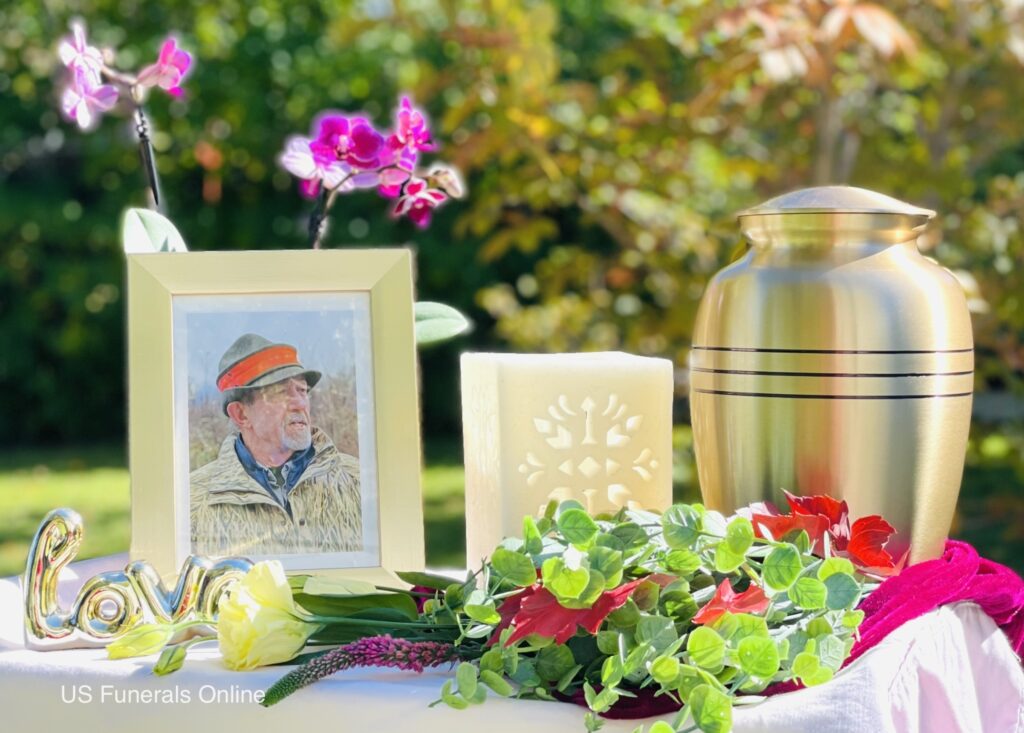
A memorial service is a ceremony to remember a loved one who has died. It is considered a form of closure following a loss and a chance to ‘pay last respects’ and say a final goodbye. It represents a remembrance of a life lived and an opportunity to pay tribute to the memory of the person who has passed.
With the shift toward cremation as a death-care option, memorial services are now typically held after the cremation and are referred to as a Cremation Memorial.
Find Local Providers to check cremation prices near you – >>
A memorial service can take many different forms. It can be very similar to a funeral service format or uniquely personalized and held at a significant place that was meaningful to the departed.
No set formats, rules, or etiquette exist for creating a unique memorial service. Today, families are embracing the opportunity that cremation memorialization offers: They can make a totally bespoke personalized remembrance for a loved one.
How does a memorial service differ from a funeral service?
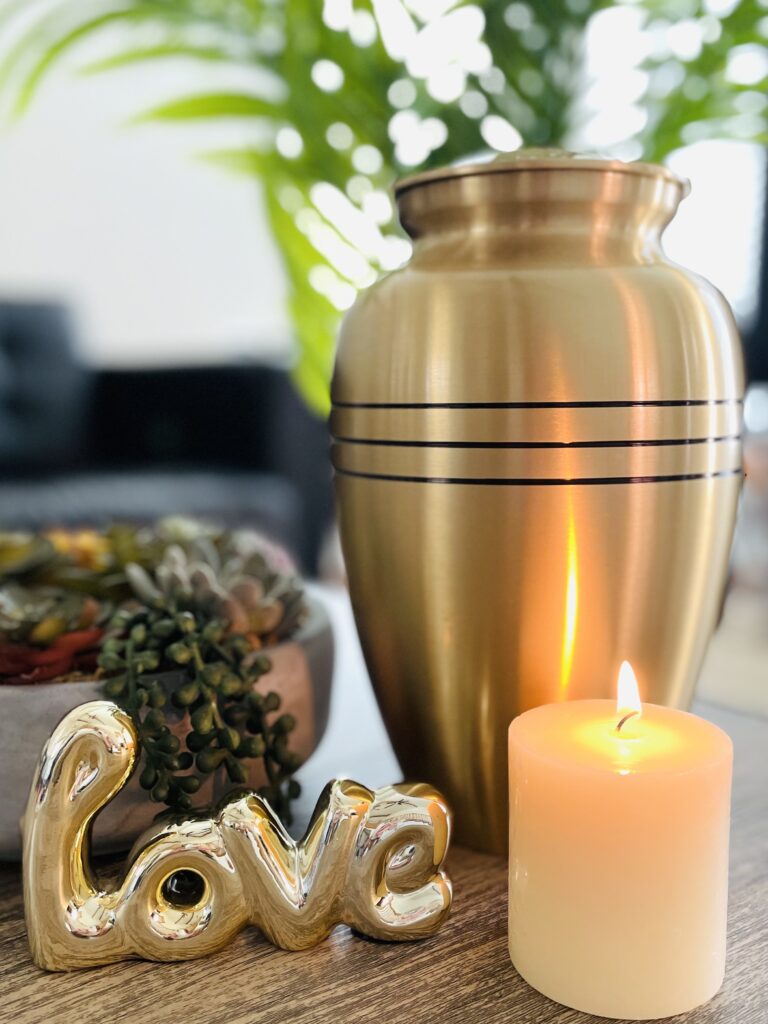
A funeral service is held with the body present in a casket. A memorial service is held without the body present. If cremation has been performed, a memorial service can be held with the cremation urn present, but many memorial services are conducted with no remains at the ceremony.
Memorial services are sometimes more uplifting and less somber. This can often be because they are not necessarily held immediately after the death. Families have had more time to come to terms with their grief, and they feel a memorial service held later gives them more opportunity to make it a celebratory event to honor their lost loved one.
How to plan a personalized cremation memorial service

If you have been asked to organize a memorial service, planning out how you anticipate a service should run can be helpful. As there will be no body present, a memorial service can be very flexible and at any venue. If the cremation urn is present, this can form a ‘center point,’ similar to a casket at a funeral service.
You must decide where the service will be held, who to invite, what format you wish the service to take, and what memorial tributes are required, such as a memory book, photos, prayer cards, music, etc.
It can help a memorial service run smoothly if there is some organization and deciding who will manage the service and who will speak and deliver a eulogy or final words.
How to create memorial tributes with words, memorabilia, and artifacts

If you arrange a memorial service, you may oversee the organizing of the memorial tributes for the ceremony. This can be arranging flowers, photos, memory cards, candles, music, videos, and even food. The funeral home often managed memorial tributes for an additional fee.
Still, if you organize a service without using a funeral home, you can purchase tribute products or make your own. Fortunately, with so many resources online these days, many companies make and sell memorial tributes and many ideas for making your own memorial products.
Check out this post about Creating Your Own Memorial Tribute.
How to create a personalized cremation tribute
‘Personalization’ is something we embrace in everyday life today. It has become important to all of us. Personalizing a memorial service can often be achieved much better when the family arranges and conducts it.
No more of those slip-ups when a funeral director mispronounces a name or omits a key detail about the deceased.
You can make a cremation memorial personal in many ways. Still, generally, stories about the deceased, photos from their life, memorabilia that attendees will associate with them, and music that the deceased loved are all good tributes.
There are no hard and fast rules, and as long as the memorial service respects the deceased and those attending, you can arrange anything that seems fitting.
What is a Life Celebration tribute?
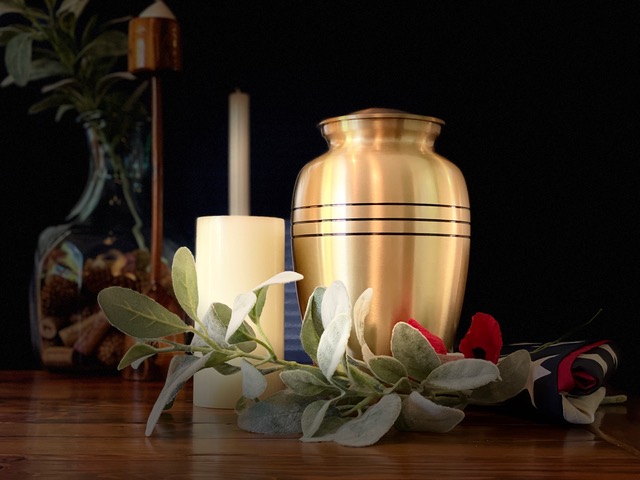
A life celebration is a type of memorial service that is more focused on celebrating the life of the deceased. So, it is more uplifting and joyful than a sad, somber service.
Some families choose to employ the services of a funeral celebrant to lead the service. A celebrant has been trained to memorialize a service celebrating a life ‘well-lived.’
Funeral homes also offer customized life celebration services, or you can prepare your own life celebration tribute for a loved one.
How to set up an online memorial page or website
As many of us live our lives and connect online these days, setting up an online memorial page or website can be a great way to have a lasting tribute to a lost loved one and enable friends and family far and wide to participate in creating a memorial tribute.

Some funeral homes now offer online memorial pages to their client families. These are sometimes free, but often, if you pay a nominal fee for the online memorial page, it guarantees it will be hosted indefinitely.
Similarly, several companies specialize in offering online memorial tributes and offer different packages depending on how long you wish the tribute to be hosted and how much information and photos you wish to add.
Facebook offers a Memorial page option. This can also allow a wider circle of friends from all over to engage, share, and contribute to an online memorial. Facebook will automatically convert the Facebook profile of someone who has died into a memorial page, with the words ‘remembering’ next to their name on the profile.
The Role of Technology in Delivering a Memorial Service

Technology has changed the world as we know it, and this is also true of funerals. Today, funerals can be live-streamed to enable those unable to be present to watch the funeral in real-time. With technology like FaceTime, Skype, and Zoom, it is possible to do this even if you hold your own memorial service.
Using photo-editing and video-editing software or PowerPoint presentations can all be useful tools to help you put together something that brings media into a memorial service. A video or slideshow can prove a lasting tribute for the family to keep as a tribute, share, and revisit as time passes or on the anniversary of a death.
You can even arrange a complete direct cremation service online today without visiting a funeral home.
Do we need to hold a memorial service?
No, you do not need to hold a memorial service if it is not considered necessary, or perhaps a very elderly relative passed without many family or friends still alive to attend. Deciding to hold a memorial service is just a personal choice.
Some people decide just to go ahead and scatter the cremated remains without any service or ceremony. Conducting an ash scattering can be regarded as a memorial act, even if no formal service or specific tributes are arranged for the scattering.
What to do with the cremated remains after a cremation memorial service: The final disposition.

Deciding what to do with cremated remains still poses a question for some families. Often, families keep an urn at home as they are undecided about what to do.
Cremation has removed the immediate need to buy a burial plot and inter the remains, although some families opt to purchase a cremation niche and have the cremated remains interred.
Scattering the ashes is becoming a more popular option. The cremated remains can be scattered in a bespoke Memorial Garden or in nature somewhere.
For more information on how to scatter ashes, read our ash-scattering guide.
Please remember that it is wise not to rush to scatter the ashes too quickly after the passing, as you may change your mind later.
Another option is to keep a small amount of the ashes in a keepsake urn and scatter the rest.
Cremated remains can also be made into memorial artifacts, including memorial diamonds, blown glass, birdbaths, reef balls, paintings, vinyl records, shotgun shells, or tattoos.
Our guide on What a family can do with cremated remains may also be helpful reading.
How direct cremation and a family-led memorial service can save thousands on funeral costs
Visit our Local Providers Search to check the local prices near you – >>
Direct cremation is a very affordable, simple, no-fuss, no-service cremation option. The funeral home handles everything to cremate the deceased but then returns the cremated remains to the family. In many areas, a direct cremation can be arranged for under $1,000.
[The cost for a direct cremation varies by provider, state, and city but can be as low as $795 and as high as $3,000].
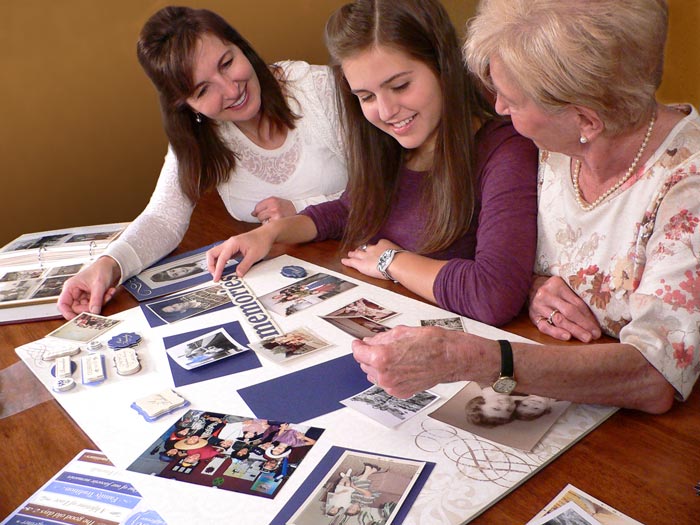
Check out our article on How Much Does Cremation Cost Without Any Services. It explains why more families choose direct cremation and provides five easy steps to plan a cheap direct cremation.
Following a direct cremation, if family and friends arrange a memorial service themselves, this can reduce the overall costs of a funeral. With a simple direct cremation and a family-led memorial service, a dignified funeral can easily be achieved for under $2,000.
In fact, it can be less if direct cremation is offered at a low cost in your area.
Family-led memorial services are becoming the new ‘norm.’ They are almost a return to family values of decades before the funeral establishment’s modern era. And why should we pay thousands of dollars to a funeral business when we can host a family and friends gathering at a fraction of the cost of a traditional funeral service?
Although holding a memorial service is not necessary after the cremation, it does provide an opportunity for closure and a sense of being able to say a final goodbye to a lost loved one. The unique thing about a memorial service is that there is no time-critical timeline for holding it. You can have a memorial service shortly after the death and cremation or wait months or even a year.
Hopefully, this overview of memorialization options and ideas can help you to conduct a personalized, affordable, and memorable cremation memorial tribute for a loved one.


